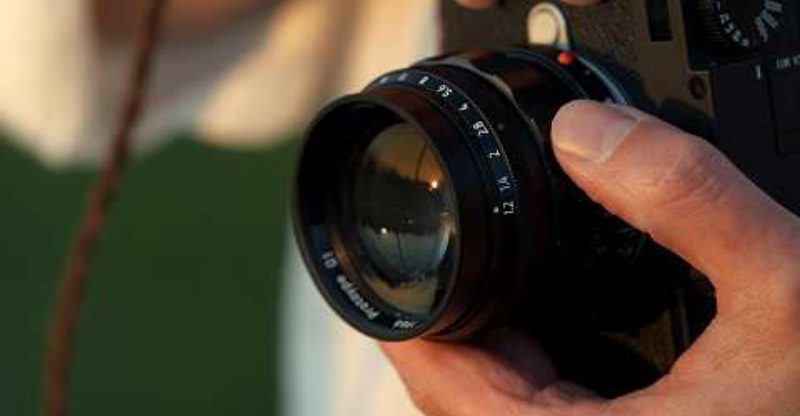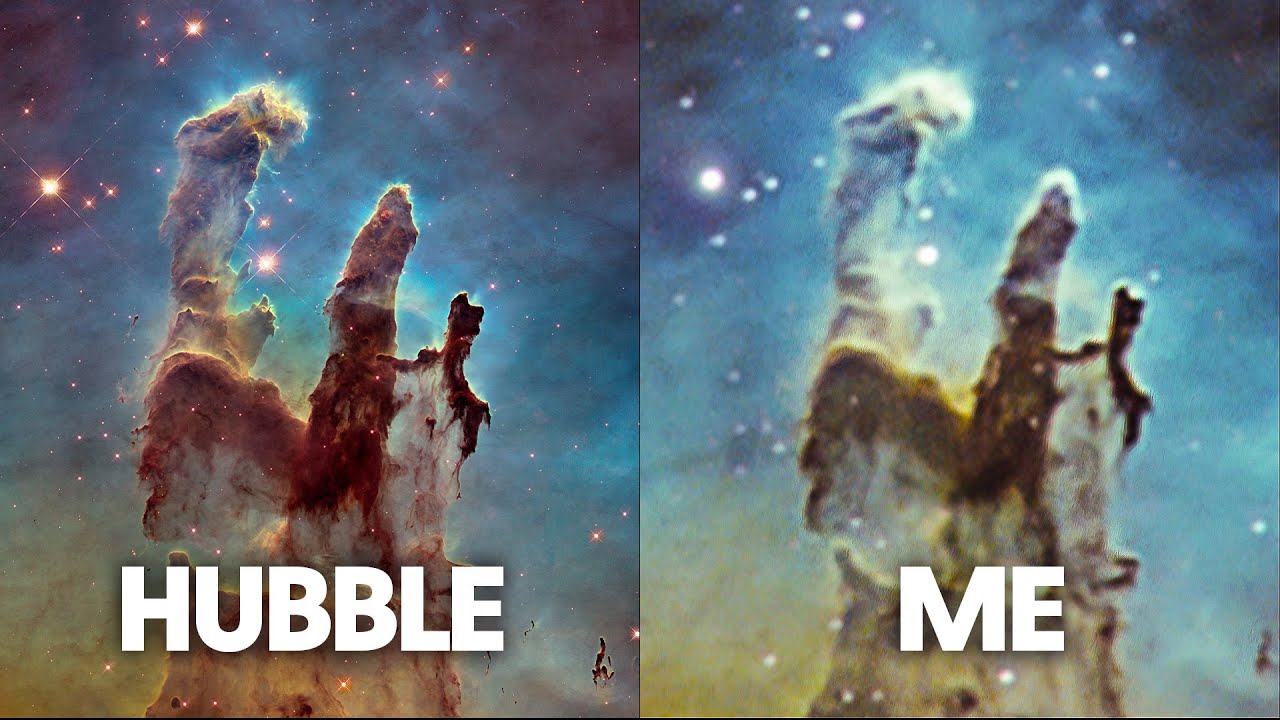The most famous lens ever made … is back!
[Music] welcome back everyone in this video we're going to take a look at what I believe is probably one of the most impressive lenses to come along in a long time this is the latest lens from light lens lab this is their Recreation of the original Leica 50mm NOC Deluxe f1.2 okay I want to stop for just a second and say that if you're the kind of photographer who enjoys modern lenses and absolute perfection in Optics this video probably not for you this lens is for photographers who understand the history of what came before them and want to shoot with the look of a certain era but with in a modern context if they say that old is new and as a photographer you want something with personality a tool that you have to lean in just a little bit and learn how to use something that's not simply push a button and it looks like everything else today spoiler alert I'm really excited about this lens and it's a look that we've moved away from but it is important it's extremely important for the photographer who wishes to have a unique voice but one who has a place in that Continuum of lens design and the way that we render a moment in time whether it's today or whether it's 60 years ago this lens has a really unique voice and a place in that history that is photography so this is the light lens lab 1966 50mm f1.2 which is an exact remake of the original Leica 1.2 noct Delux from 1966 the light lens lab is true to the original design of six elements in four groups all the way down to the original lens glass materials that they also hand grind the two aspherical elements that make the original so unique now one note I want to make about the sample images that you're looking at I was obviously able to get a very vintage look and the lens is going to take care of a great deal of that for you for me though I shot all of these on digital when this lens was actually designed for film so an important part of that for me personally is the way that colors are interpreted and the goal that I had was to get a nice film look that matches well with the Vintage characteristics of the lens the classic look for this I used my two preset packs codified and fujifezz this year to make them available for everyone else to use I'll put a link in the description below this video if you're interested in checking them out for yourself I was really surprised how well these film simulations worked with the look that this lens gives it really is a fulfillment of what I had in mind when I started putting these together so in the mid 19th century we saw the rise of 35 mm as the medium for photojournalism and one of the challenges that we had back in those days was ISO speeds and back in the 1940s an ISO of 100 was considered really high that's some something that we don't have to even think about today because we have cameras that are capable of going up to 12,800 and having a usable image but in those days this was a real Challenge and so the solution to that was these camera companies who started this race to come out with the fastest lenses possible that could shoot in the dark basically with lower film speed so in the still photography World a company called zunow was the first company to make a hot mess of a sonar design they had a 50 cm f1.1 just a note that in those days they used centimeters as the default measure value today we use millimet so 5 cm would be a 50 mm lens after zunow opened the doors we saw contributions from Nikon with their 5cm f1.1 using a double gauze formula Canon with an even faster 50mm f0.95 and even fujinon had a 5cm f1.2 that was made for Contex Mount but Leica at that time had an interesting solution that they'd been experimenting with and so like obviously known for German engineering and high quality Optics they came along and saw the challenge that we had with using these really wide aperture lenses in that image quality was very difficult to control Leica had been experimenting with aspheric elements for quite some time and that was their solution was actually to use an aspherical element in this lens not one but two one of the biggest challenges back in those days with aspherical elements is that they had to be hand grind because when you have an aspherical element kind of the key to that is the tolerance of the surface and so we're talking about microns at this point and so the only way to get that perfect smooth was to actually hand grind them using a machine even more Troublesome for the manufacturing process is that of all of the elements that were hand ground there was a rejection rate of about 80% of them in other words 80% of them were not used so this was a financial disaster for Leica they made very few of these lenses they kept it in the lineup for about 9 years and the numbers kind of vary depending on your Source but they only made about 2,000 of them as a result they're highly regarded as collector's items because they're rare and they were handr so the prices today that you're seeing I don't know if they're actually selling at these but if you go look at them on the used Market you're going to find them anywhere between about $30,000 to $50,000 used around 2019 light lens lab which is led by the ever Mysterious Mr Joe were setting up shop and defining what classic vintage lenses that they wanted to try to remake and I have to stop here and say what an impressive undertaking this is in the lens World lenses are almost always designed by Engineers with an aim towards Perfection Within given budget photographers we appreciate and select lenses based on a look and this includes historical designations so there's a large divide in modern lens design and light lens Labs share the photographers perspective which I think is really cool and their mission is to make things quote unquote like they used to so this includes the same glass materials the same designs and even production techniques the housing is often far better than the original and they are doing some of the more important work and on The Cutting Edge of vintage Optics in the Modern Age I have used used all of their realized lenses and I can attest that they are in much better value than trying to hunt down the expensive Originals so today spherical elements can actually be molded and so that's why we see them in just about any professional lens that comes out on the market back in those days they were handr today they much easier to make and what's interesting about this is light lens lab decided to be true to the original lens in that they actually have a machine that they've recreated of the original and they are hand grinding the elements that you find in these lenses so they have de deal with the same injection rate uh the same difficulties in production and there's several really interesting things that have come to light out of all this so the legend is is that like I had one employee this guy named Garrett Bergman gared was the only one that was qualified to operate this Optics machine over the 9 years of production of making these lenses and one of the things that light lens lab found when they actually started putting these together with a hand grinding machine is that there is no way that one person could have done all these by themselves it just is impossible so there are a lot of myths that come up around vintage lenses and I think a lot of these come from people who are just big fans of the brand and a rumor gets spread and next thing you know it's fact and that's the whole story but uh it's really interesting when somebody actually replicates the process that went into the original they learn a lot about what's coming into this and I think that's one of the really cool things about light lens lab but I do want to note that because light lens lab are hand grinding these elements for authenticity don't expect these to be infinite in production they're going to be just like the original they're very difficult to make so if you want one of these lenses I would suggest to buy one now or even pre-order while it's available I expect the numbers will be similar probably to the 9 years of production that Leica had but possibly will be sold out in far less time so welcome to lens collecting I should also note that right around the time that light lens lab decided to replicate the original NOC Delux Leica also had the same idea and so today you can buy a fully replicated NOC Delux as a quote unquote Heritage lens from Leica for just under eight grand I reviewed this lens when it came out so one of the things that you've got to understand stand is when large companies decide to mass-produce a Heritage lens so to speak they're still dealing with large quantities so therefore they take advantage of modern production techniques it's pretty crazy what light lens lab are doing hand grinding the original glass so the Leica elements are not handr they're actually molded and when I reviewed that lens I thought I was getting a look that was similar to the original but what's interesting is when you compare these side by side I learned a lot so first off the light lens lab is a 50 mm lens the Leica is an almost 52mm lens this is common in lens design to have slight variances but which is correct to the original well in this case light lens lab are correct with the focal length like have used a common technique of pushing it Forward slightly to correct aberration withinin the lens and there's nothing wrong with this but it is one of many techniques along with the molded a spherical elements that make a modern interpretation that doesn't quite look like the original I rented the like a reissue again to compare these two lenses side by side and we talked about focal length but the boka is actually very different in both these lenses as well Leica is using the molded as spherical elements so they're going to be very clean very smooth there's no onion skinning that is not the case with the light lens lab they're going to be a little more rough a little more natural looking uh some cases could be distracting but I think a lot of people like myself want this look and the main reason is it's going to start to show how light lens lab is much more of the 60s than the modern like a reinterpretation which one you prefer is going to obviously be subjective but if you really want want the 1960s look light lens lab is the clear winner the lens coating on each of these two lenses is very different as well the like a reissue uses modern lens Coatings not available in the 1960s and it leans to the warmer side of colors when the white balance is manually set for comparison so let's talk a little bit about image characteristics with the noct Delux f1.2 bokeh is gorgeous on the 50mm 1966 to my eye it looks like images that we see in Stills and film from the 1960s the color is vibrant contrast is excellent you can see what adding those as sperical elements did to the design if you've used other 50mm lenses from this arrow with white apertures highlights and bright areas of the image are most characteristic for me you do lose color contrast in the highlights which is typical for the era but there's such a smooth rolloff that it makes digital cameras take on the look of their film predecessors it's an impressive phenomenon so to my eye the real magic on this lens happens at the minimum Focus distance so the transition areas from where it goes from Focus to non-focus are blurred but they're beautifully contrasted and you don't find this on cheaper lenses of the era there's a dreamlike quality that's taken on and it leaves the impression of abstraction to the viewer so two years ago I did a review of the like a Heritage Edition of this lens which was the modern remake and I went and rewatched that video to see how much of it I had right and surprisingly I think I stand to all of my opinions on that lens as I said in the review it is a modern interpretation of EV vintage lens and there's nothing wrong with that but it just kind of rubs me a little bit weird because it's kind of like well the best I can come up with is you remember the TV show Happy Days it's like 7s 50s it's the 1950s is viewed through the 70s and so when you're using modern technology to build a vintage lens it's kind of like remakes of vintage cars you know you've got this antique car that has Bluetooth in it so it's just kind of something that rubs me a little bit weird because it's this modern take on something it's not a bad lens and if you can afford it the Leica is excellent for all intents and if you like the look of that lens then that lens could be for you the light lens lab on the other hand is much more authentic I had so much fun shooting on this lens I've got to return this tomorrow and it makes me really sad I did pre-order it like when they put the pre-order out like everybody else and it's going to be a little while before it's out but I can't wait to get this lens it has not come off my camera since I got it for those of you who are wondering this lens does come in a Leica M Mount now you can use adapters I've used this on my Sony cameras I've used it on my Leica SL2 you can even put it on Nikon cameras so you will have to adapt if you want to use it on another body but to have this lens in Your Arsenal for that look is something that is just unbelievably cool and it's a lens that I absolutely love so if you have any questions drop them below I'll see you guys in the next video Until then later













